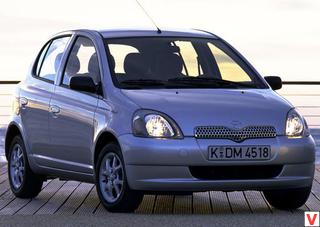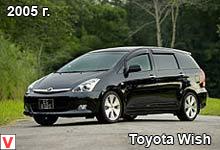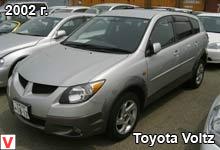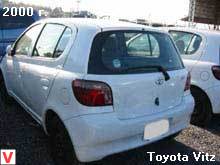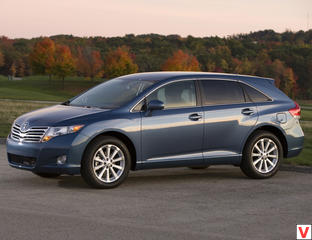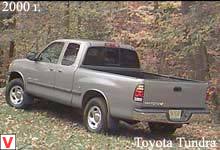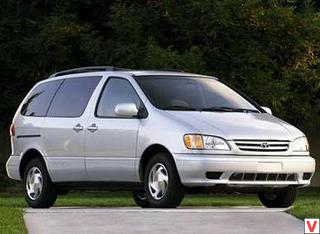
Celica is one of the long-lived models. The name received from the Spanish word "celestial" - "divine", "unearthly." She made her debut in 1970. Initially, it was positioned as a car for young with the heart and soul of motorists who needed more than just a means of transportation. Design Celica was revolutionary for that time. The model was produced in a single version: ST, 2-door sports coupe. Under the hood there was a 4-cylinder carburetor engine with a volume of 1.6 liters, 75 hp, consuming about 10 liters of gasoline per 100 km.
In 1974, the GT model appeared, which differed in its growth to 109 hp. 1.6-liter engine capacity or new 2.0-liter engine with 123 hp In 1976, the Celica goes with a liftback body. It was offered only in the GT version and positioned as a sports-class car.

The maximum speed reached 210 km / h, which was at that time a figure close to astronomical. Initially, the Toyota Celica was equipped with a McPherson type combined suspension (independent in front, dependent on the rear), and also had a five-speed manual gearbox, which made the car agile, fast, and with good stability in motion not only in a straight line, but also on bends, which Celica went perfectly even at elevated speeds. The perfect car for those who want to feel like a racer driving a city car. The second generation Celica appeared only after 7 years at the very beginning of 1978.
Over the 4 years of the second generation, 2 versions have been introduced, called the Series A and Series B and a huge number of modifications. So marketers figured out what options are needed for potential buyers and what people are willing to pay for. Cars had external differences, for example, Series A offered round headlights and chrome-plated bumpers, Series B - square headlights and black unpainted bumpers. Engines: 1.6, 1.8, 2.0, 2.2 liters.
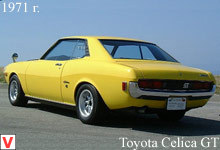
In 1980, on the basis of the Celica coupe, a 4-door Toyota Celica Camry sedan was created, which, after two years, emerged as an independent model of the Toyota Camry. In 1982, the third generation model was introduced, which retained the rear-wheel drive and body types of the previous generation. There have been significant changes in the design.
Celica received a "square" design and "blind" lights. From this appearance, consumers were delighted. The car bought up perfectly. The engine range has expanded with a 2.4-liter gasoline engine. In the same year, a turbocharged version of the model with a 1.8 liter 3T-TE engine was introduced.

By that time, Celica had lost a bit of sportiness, and in 1983, in order to remedy this situation, Toyota added the GT-S model to the model range. Its equipment included wheels and tires of a larger radius, a sports suspension (independent of the rear wheels), a lounge with sports seats, a steering wheel and a gear lever, trimmed with leather. It was this model (factory designation RE63) that left the most noticeable mark in the sport, giving a new image to the car and the brand as a whole. And with a turbocharged engine three times in a row was the first in the most difficult African Safari rally.
The most notable product of the Celica III is the Supra model, which has moved to a more “adult category” “gran tourism”. Fully updated fourth generation model was released in 1986. Now Celica was offered in versions ST, GT and GT-S; body options - coupe and liftback.

Starting with this generation, all Toyota Celica cars began to install front-wheel drive. The model has a streamlined body. The drag coefficient for those years was simply outstanding - 0.33. In mid-1986, the next generation of the Toyota Supra was launched. It was a new development, created from scratch. Toyota stopped using the Celica prefix, after which the car was named Supra. In 1989, the fifth generation was introduced.
Absolutely new style, front-wheel drive and a streamlined body - the main characteristics of the Celica V, which was offered with a body liftback and coupe. The front facing has been increased and the rear lights have been upgraded, and the Celica symbol has been replaced with a traditional three-ellipse sign. Several options have been proposed: ST, GT, GT-S, convertible and GT-4.
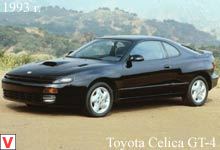
The basic model ST was offered in two bodies and was equipped with a 1.6-liter engine producing 104 hp. GT and GTS models were produced only with a body liftback. The GT-S model differed from the GT in wider wings, all disc brakes and a rich list of standard elements and options. From this year on, the GT-S version was equipped with an ABS anti-lock braking system. From the rally modification of the Toyota Celica ST165 in 1990, the Toyota Celica ST-185 GT-FOUR 2.0 turbo was created, which, despite the obvious similarities with the "ancestors", had a number of significant differences.
First of all, these differences lay in the exterior, namely, Celica acquired a modern and even in some places futuristic appearance, smooth, swift outlines, pleasant to the eye, completely rounded corners. On the other hand, for a rally car, this was not only an aesthetic requirement, but also a necessity, because by changing the silhouette of the hull, Toyota engineers gave it more advanced aerodynamic characteristics. Many years have passed, and yet, this generation is still considered, according to motorists, the most beautiful and speedy. The Toyota Celica ST185 GT-FOUR brought the rider Carl Sainz victory in several competitions.
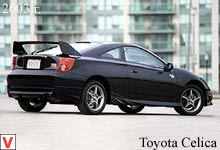
In 1993, the sixth generation Toyota Celica was presented at the Tokyo Motor Show. It appeared during the boom period of cars of the class RV (recreational vehicle). At that time, few models were produced, designed specifically for young people in order to stop this trend, and a new (at that time) generation of Toyota Celica was created.
Marketers abandoned the "blind" headlights. Now the front part was crowned with four round headlights, for which the people of the “sixth” Celica were called “big-eyed”. For the Japanese market, Toyota released a version of the Curren with a more standard design. Drive in front of the car; A choice of three body types: coupe, liftback and convertible. Salon offers excellent ergonomics. Basic equipment has front airbags, ABS anti-lock brakes, air conditioning. The base version hides a modest 7A-FE engine with a capacity of 1.8 liters and a total capacity of 116 hp under the hood.

or 125 hp (in the Japanese market, the most modest was a 2.0-liter unit with a power of 140 hp and such cars were designated by the letters SS1). The Toyota Celica GT (SS2 or SS3) offers a 170-180 hp engine. Externally, the GT can be distinguished by a powerful spoiler at the rear. By the way, the ground clearance on the passport data is 140 mm. The most "clever" cars were offered in the Celica GT-4 version (sometimes referred to as the Celica Turbo 4WD or SS4).
It installed a turbocharged engine with a power of 242 hp. (in Japan - 255 hp) and all-wheel drive system. This generation had a phenomenal success in the world rally championships - it was on Celica VI that Cancunnen and Grist became world champions in 1993-1994. In January 1999, at the Detroit Auto Show, the XYR concept was introduced, and after eight months in Frankfurt, the seventh generation of Celica debuted, which received the ZZT-23 index. The car was 85 mm shorter, 15 mm narrower, but at the same time its wheelbase increased by 60 mm.
Stretched roof arch - a constructive scheme called forward cab - visually made the car lower, although its height, compared to the previous model, has not changed. Drive in this family only front. Toyota releases the Celica VII in two versions: the GT and the GT-S. The car received a completely updated power units: a 1.8-liter 4-cylinder engine with a WT-i system with a capacity of 143 (US, Europe), 145 (Japan) hp, and also high-power 183 (US) and 190 (Japan ) hp Torque from the engine transmitted 5-or 6-speed manual, as well as 4-speed automatic transmission.
Standard equipment includes: two airbags, fog lights, rear wiper, air conditioning, adjustable steering wheel, power windows, central locking, cruise control, AM / FM radio with CD player, leather steering wheel cover. The list of optional equipment includes ABS, side airbags, rear wing, and hatch. Celica has earned a reputation as a fast-moving car and continued to enjoy great popularity, being one of the longest-lived Toyota car group.

